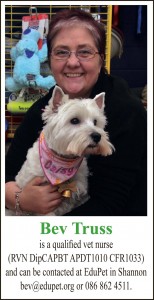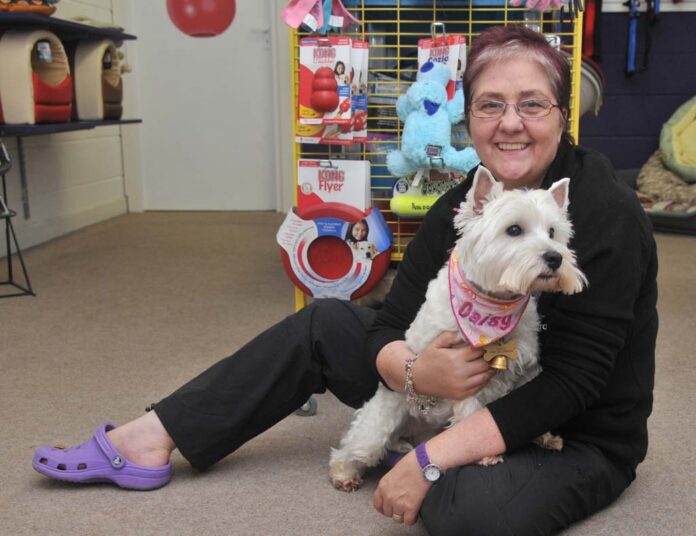Dogalogue with Bev and Daisy

DOGS are sociable animals and, as such, like to be part of their pack or, as we would call it our family. There are many ways that dogs will exhibit problem behaviour, especially when left alone. Boredom may be a key factor or lack of proper training in young dogs, they have never been taught that it is unacceptable to chew items, bark or dig. Others behave unacceptably because they cannot bear to be parted from their owners and become anxious.
Dogs that suffer separation anxiety should not be trusted alone, even for a short time. Some may be destructive, others are noisy and some become so distressed that they will soil in the house.
The ones who tend to suffer most are adopted dogs, dogs that have had two or three homes; shy, submissive, sensitive dogs and older puppies.
Tips on what to do
– Exercise your dog, walk or play games about an hour before you have to leave him so he has time to settle down and is not on a “high” when you leave.
– Ignore him for 10-15 minutes before you go out. Do not say goodbye or make a fuss – just walk out and leave him. The contrast between you being there and not being there is much reduced. Start by leaving him for 30 seconds then returning, again ignoring him as you return for a good two to three minutes. Do this a few times a day gradually increasing the time you leave him. It’s no big deal when you leave or come home.
– Leave him with an old piece of clothing with your scent on it. Keeping it in the laundry basket will save you having to wear it to replenish your scent.
– Leave him a toy or chew stick that he is allowed to chew on, this will keep him occupied and prevent him from destroying things he should not. I prefer a chew toy stuffed with favourite treats.
Leave him somewhere that any damage he may do will be reduced – a utility room or indoor kennel. Keep all valuables and electrical wires out of reach; it is important to leave him in the house where he will feel most secure rather than out in the garden.
– A radio left on low may help comfort.
– Using a Dog Appeasing Pheromone diffuser in the room, available from vets and bigger pet shops, may help in varying degrees.
– When you return ignore him for two to three minutes. If he is jumping up or barking, he should be completely ignored until the unwanted behaviour stops and he is calm. This means no eye contact speaking, shouting, touching, nothing that will give the dog any attention good or bad. Once he is calm and sitting, then praise him and make a fuss of him quietly asking for attention.
On no account punish your dog. This will only make him more anxious about your return and can make the problem much worse. If your dog has been destructive and on your return is submissive – lying on his back tail, between his legs, head lowered and ears flat this is not a sign that “he knows what he has done”. It is an attempt by the dog to appease you and reduce any punishment.
Dogs must be caught in the act for them to connect the crime to the correction; punishing them perhaps an hour after the deed is done is useless and adds to the anxiety of you returning. It is a cycle you must break by ignoring him when you return. He will not be anxious about being shouted at or punished, therefore, will be less likely to be destructive.
More severe separation anxiety related disorders must be dealt with by a qualified behaviourist, who may ask that you video your dog when you are not there. This is not a ‘one size fits all’ problem. Each dog has to be assessed on their own behaviour and what is needed to help them settle and be happy to be on their own.
Motoring editor - The Clare Champion
Former Chairman and voting member of Irish Motoring Writers' Association

